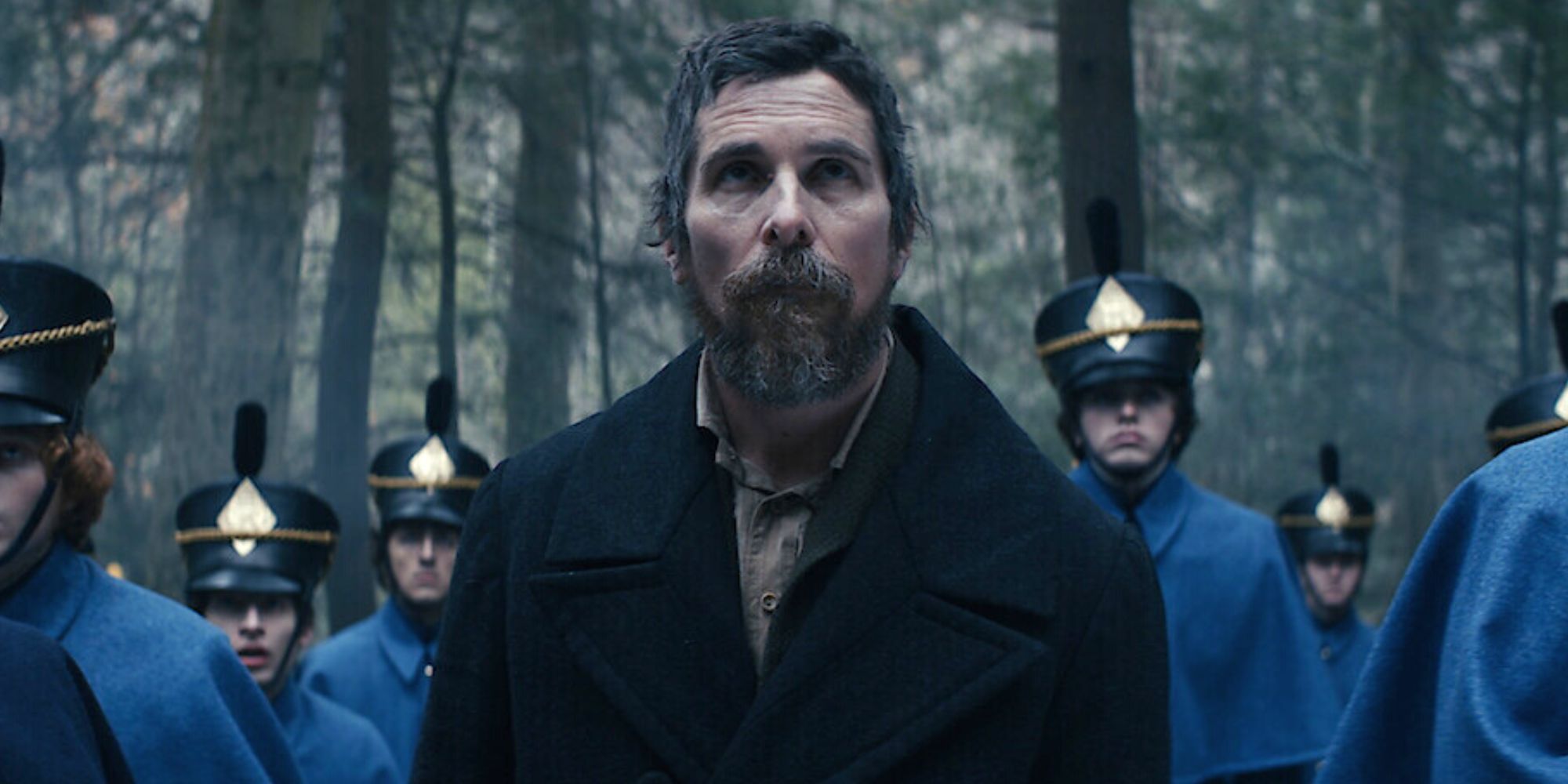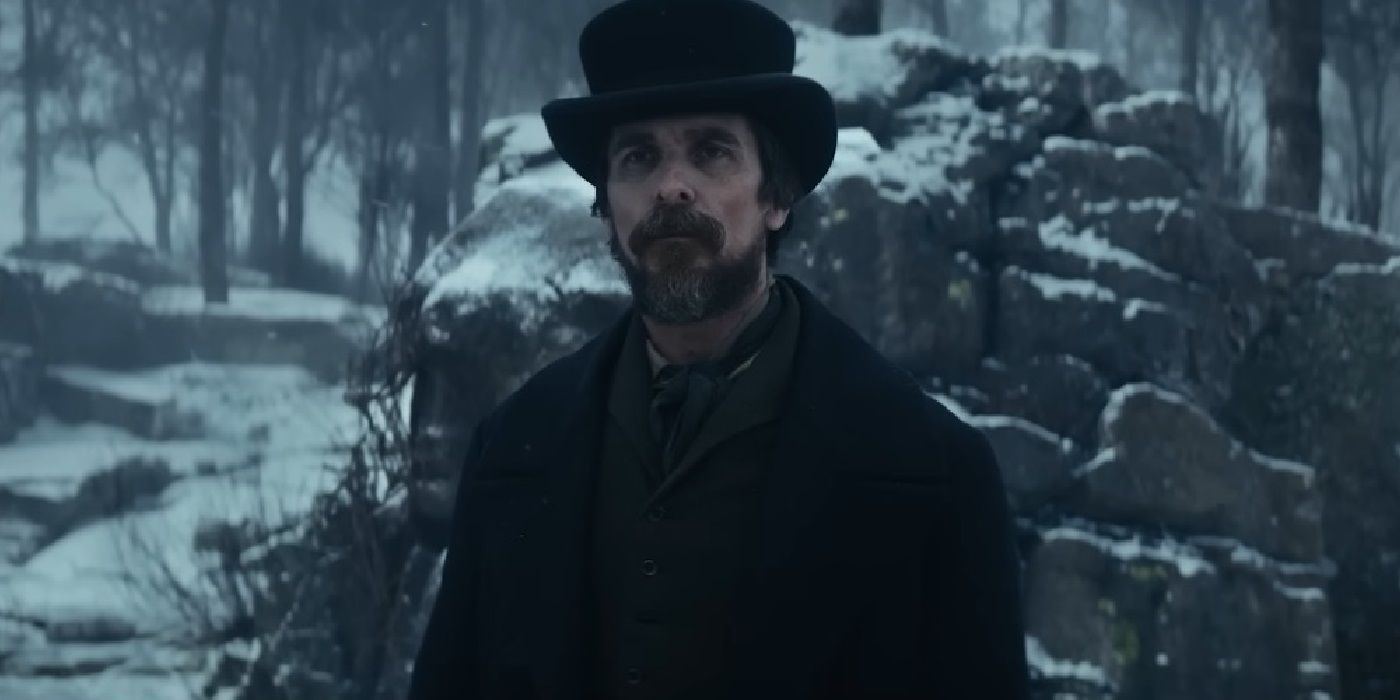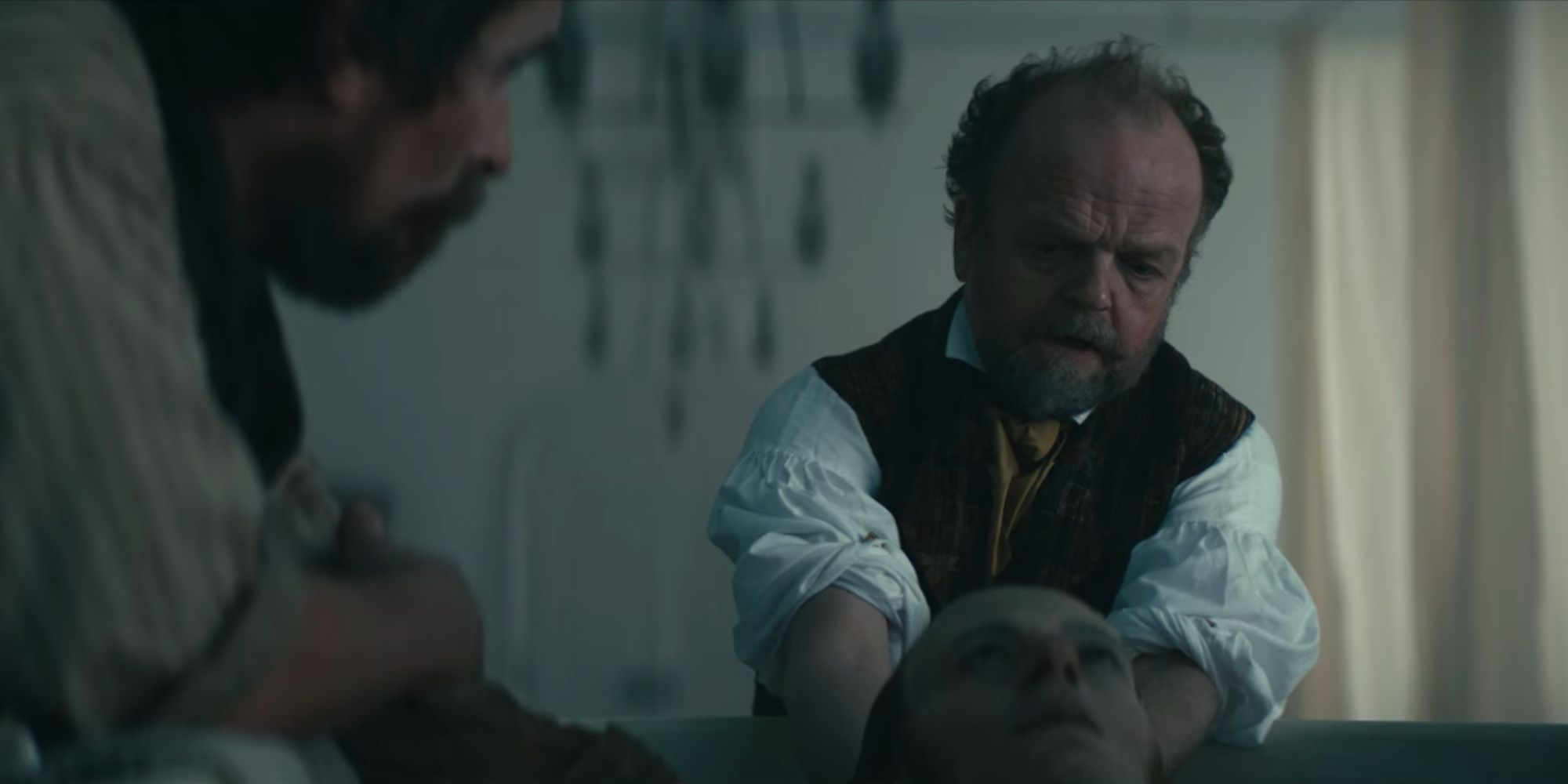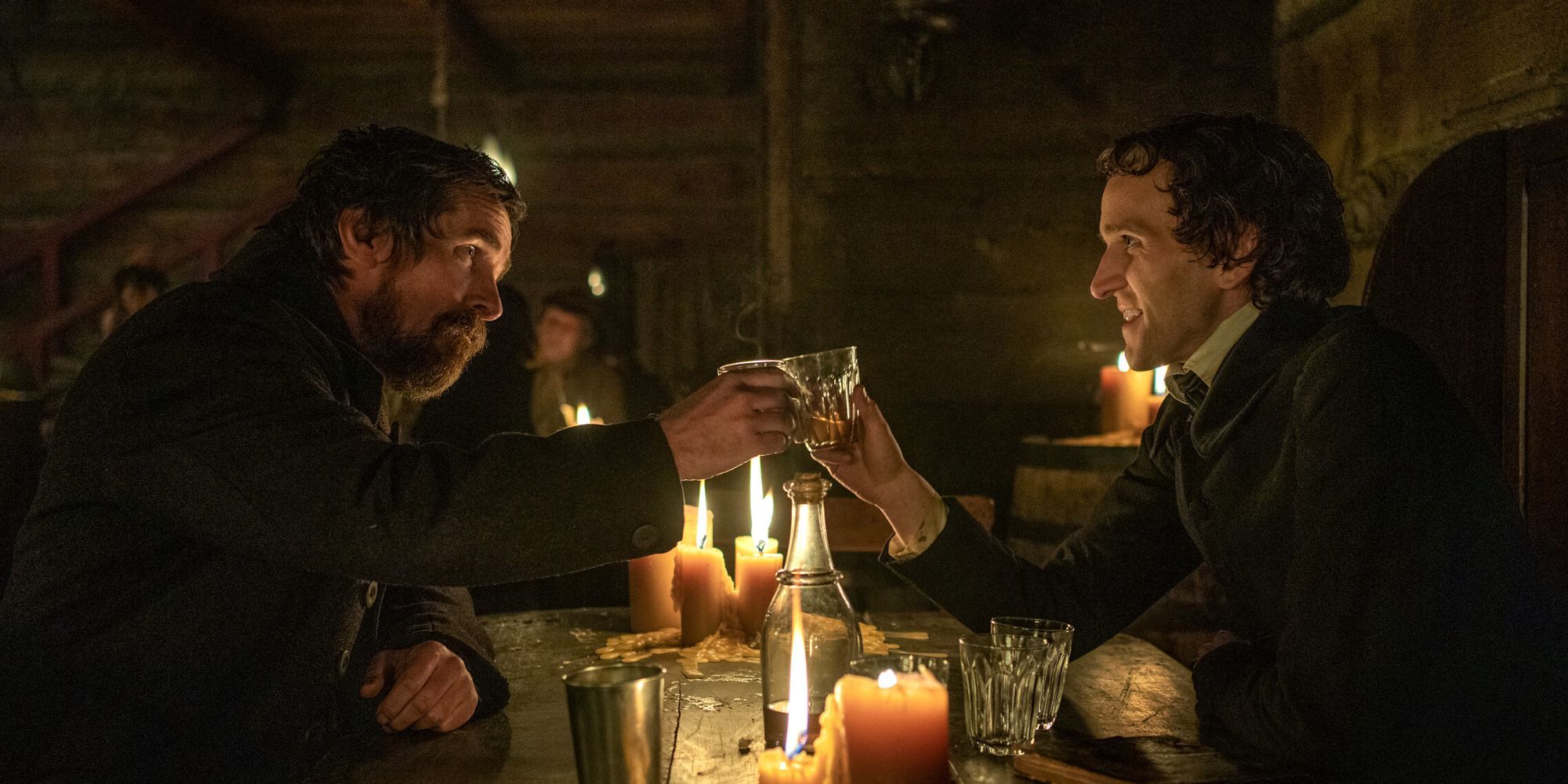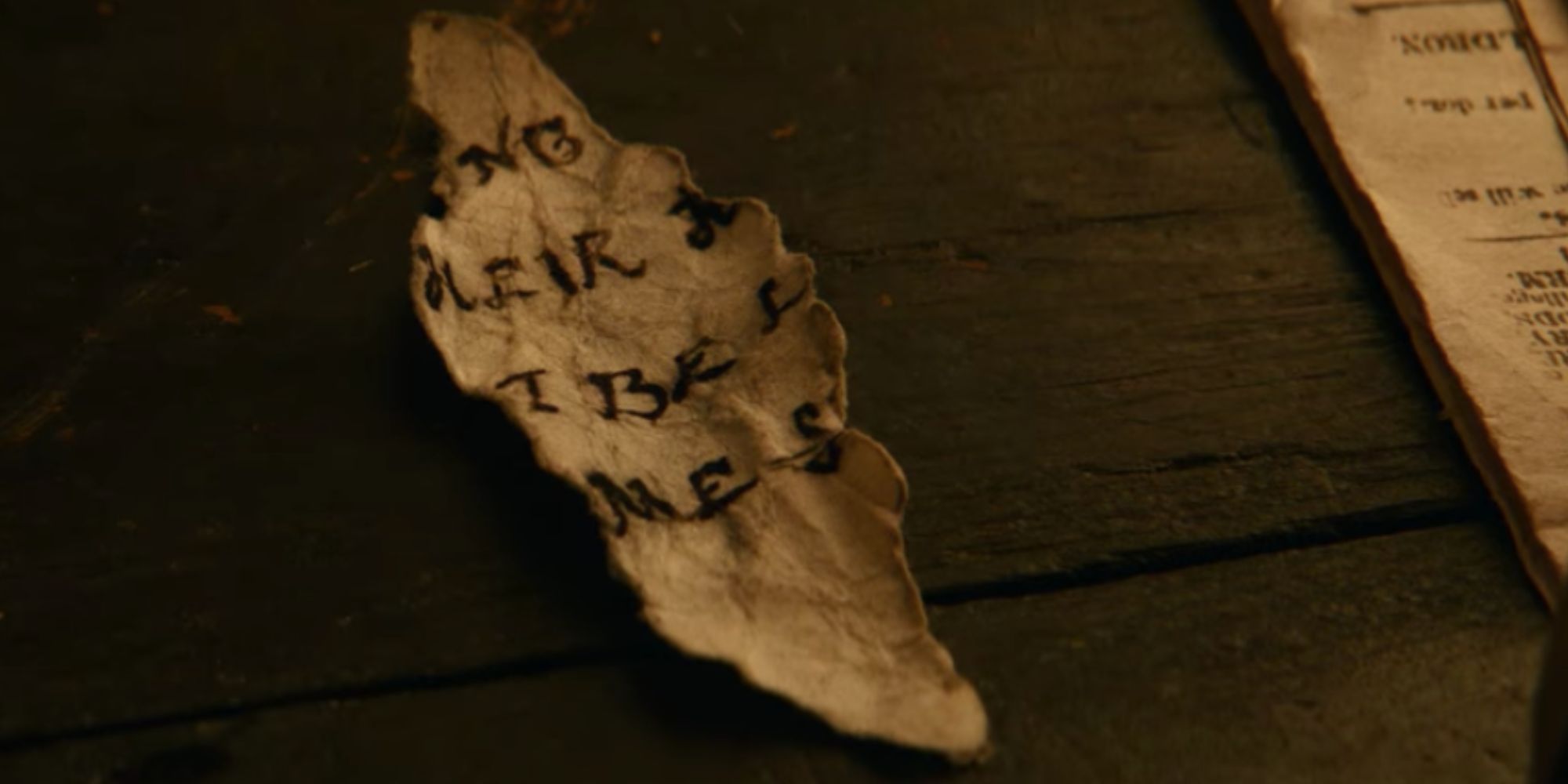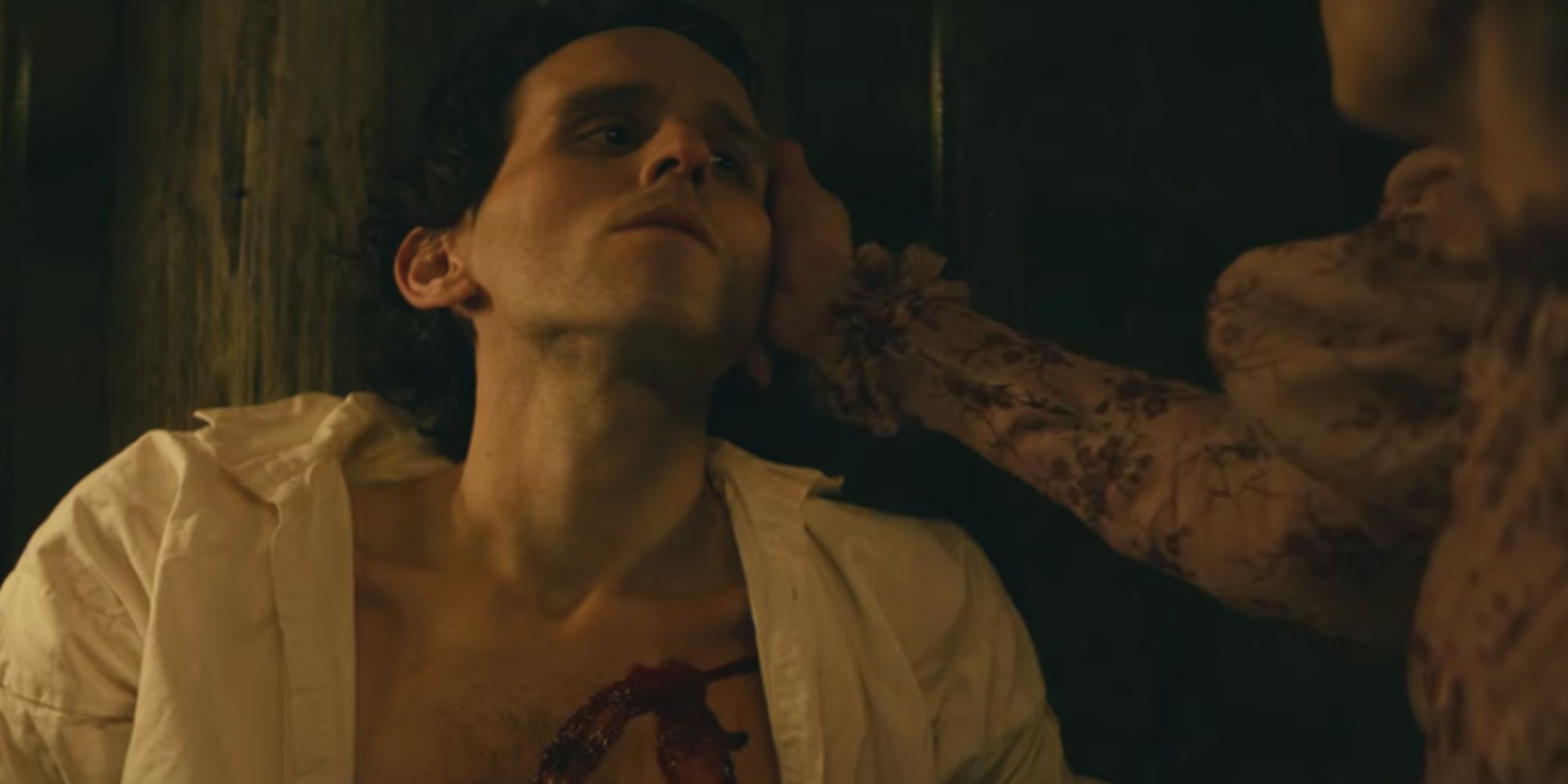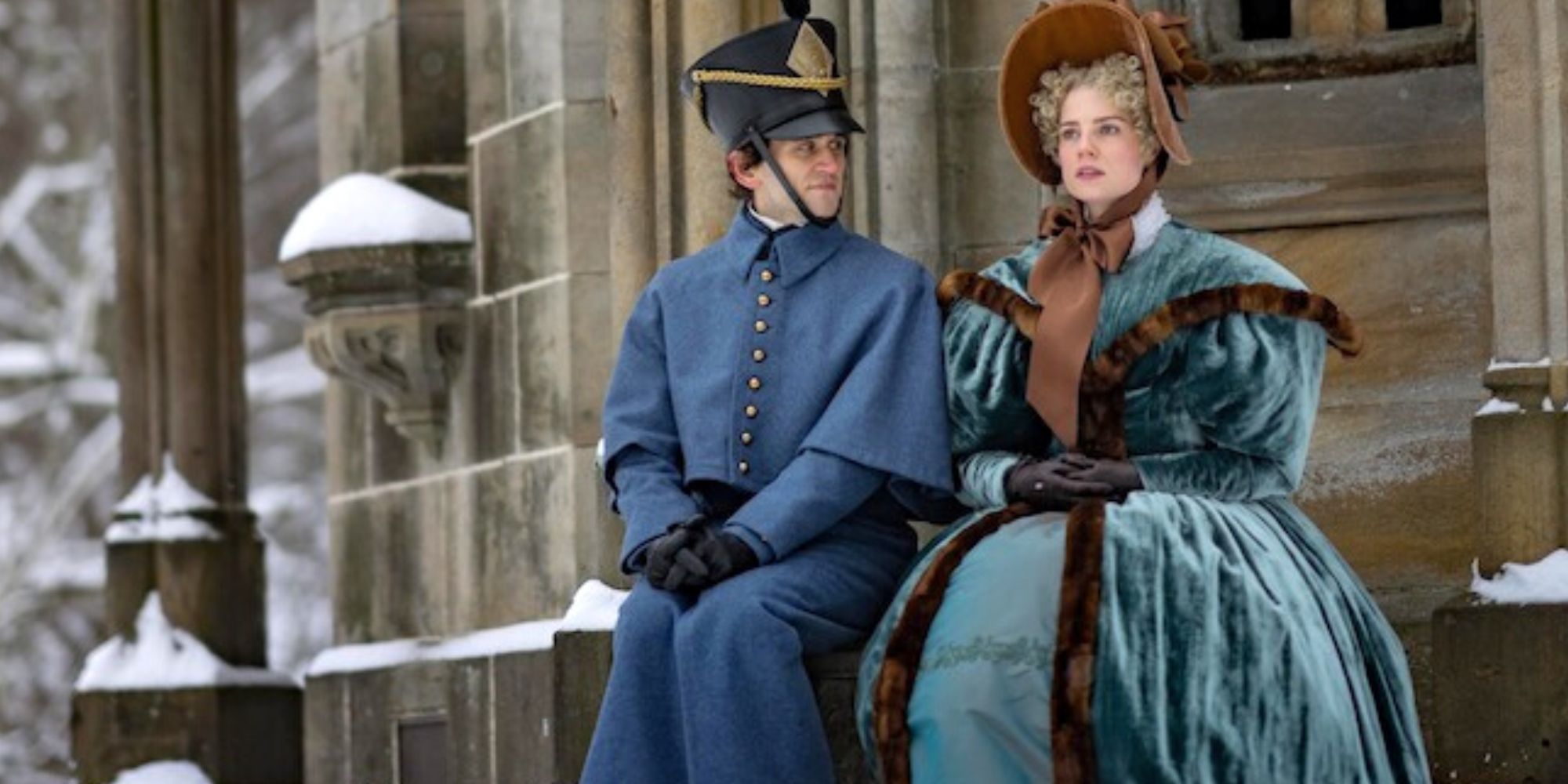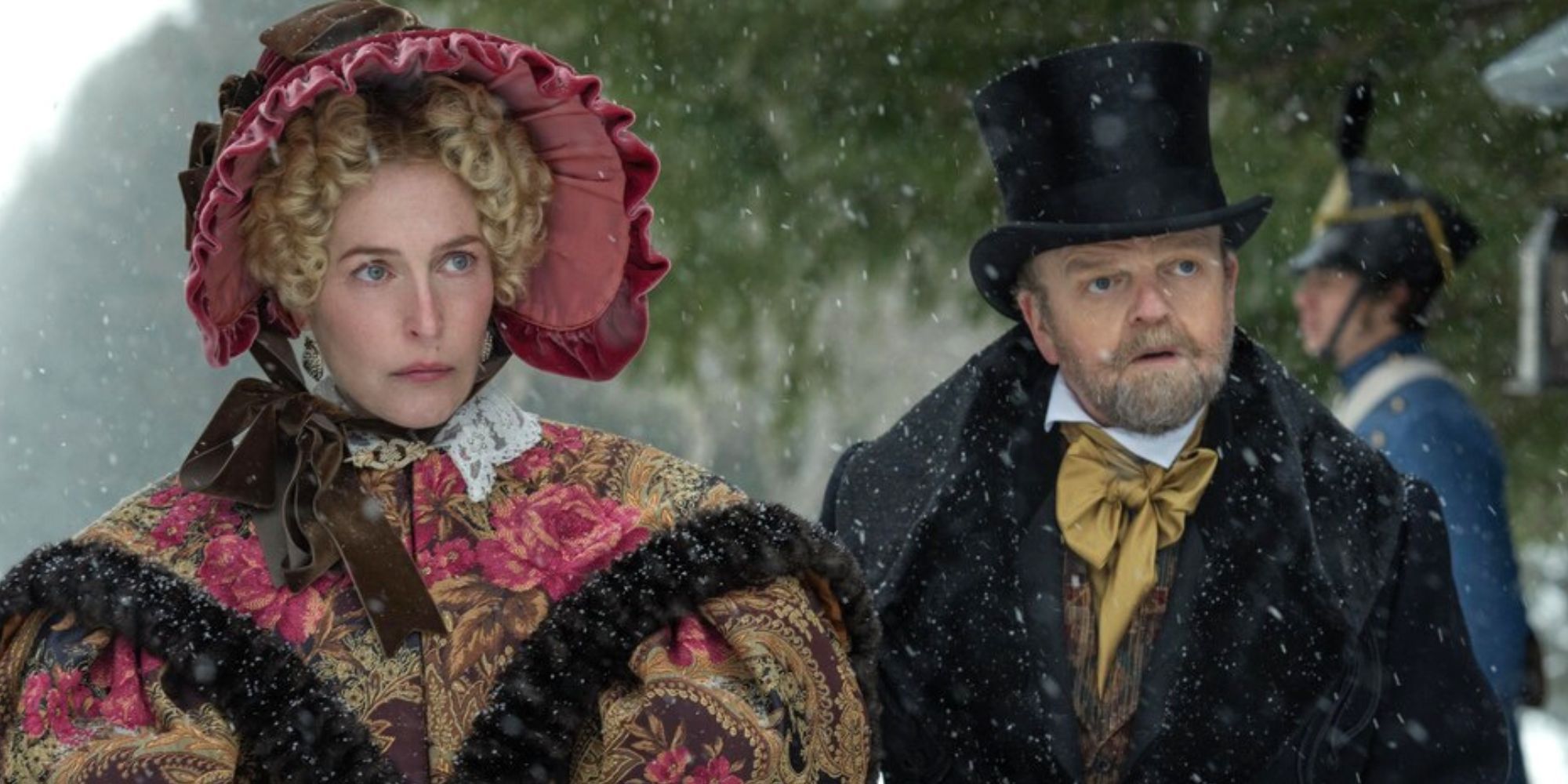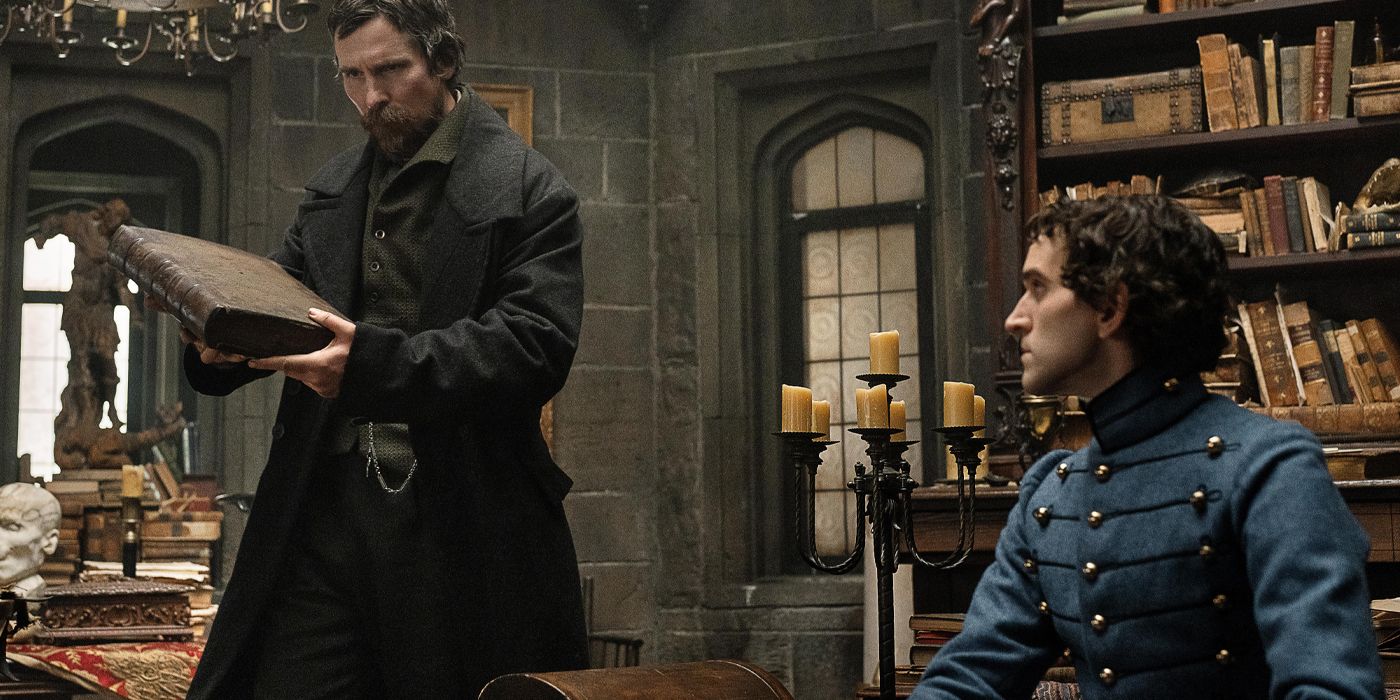Netflix's The Pale Blue Eye starring Christian Bale and Harry Melling is a classic "whodunit" mystery and origin story of the famous poet and author Edgar Allan Poe. Set in 1830, former detective Augustus Landor is summoned to West Point Academy to look into the mysterious death of a young cadet. He meets a young Poe who happily assists the veteran detective in his gruesome investigation.
While the movie isn't based on an actual story by Poe, it's full of subtle references and nods to a handful of his most notable works, including "The Tell-Tale Heart" and "The Raven." Audiences may have caught the more obvious hints, but these are some of the film's easter eggs that are harder to spot.
Augustus Landor — "Landor's Cottage" (1849)
Augustus Landor is a retired detective who lives alone in a traditional wooden cottage surrounded by a thicket of woods and conceals him from the outside world. In one of the last scenes, Poe tells Landor that one day, he will write a poem about him that will immortalize the detective in history.
The detective's name references Poe's short story and final work, "Landor's Cottage." Unlike his usual stories, it is a lighter tale about a man who, while on a walk, comes across a beautiful cottage tucked away in the woods. He's greeted by a young woman who takes him to meet the cottage's owner, Mr. Landor. The story was inspired by Poe's final home in New York, which is now a museum dedicated to the poet.
The Victims — "The Tell-Tale Heart" (1843)
When Landor is brought up to speed on the case, he's informed that after Fry's body was recovered and brought to the academy, someone snuck into the morgue and carved his heart out. As the body count rises, each victim's heart and other body parts are removed and never recovered.
In "The Tell-Tale Heart," the narrator murders an old man one night, dismembering his body, including his heart, and hides the remains under the floorboards. When he can't stop hearing the sound of the man's heart beating beneath its hiding place, he cracks and confesses to the police. The story is also referenced in the movie's title itself as the narrator becomes crazed by the old man's eye, which he describes as resembling that of a vulture's "pale blue eye with a film over it."
Confession With a Single Stare — "The Raven" (1845)
Landor arrives at the local pub, where he finds Poe sitting alone at a table in the back corner. The detective joins him, and as they engage in small talk, Poe asks Landor about a rumor that says he managed to get a confession from a suspect with just a single stare.
This line is a direct reference to Poe's classic poem, The Raven, which tells the story of a man in mourning who is visited by a talking raven. Like a detective interrogating a suspect, the raven sits and stares at the man throughout the night, only repeating the phrase, "Nevermore," which sends the man into a frenzy. The raven symbolizes mourning and remembrance, which also speaks to Landor still mourning and remembering his daughter.
Deciphering the Note — "The Gold-Bug" (1843)
While examining the body of Cadet Leroy Fry, Landor discovers a piece of a note clenched in the cadet's hand. With very little to go on, Landor looks to the mysterious letters for any clue as to what the letter might have said and why the young cadet had it on him.
In Poe's story, "The Gold-Bug," William Legrand searches for a buried treasure that he hopes will restore his lost family fortune. At one point, he finds what he thinks is a blank piece of parchment, only to discover a secret cryptogram written in invisible ink, which is the key to finding the lost treasure. Cracking codes and puzzles was also a personal hobby of Poe's, who even solved them professionally for newspapers and magazines.
Lea's Ritual — "The Pit and the Pendulum" (1842)
Lea turns to unusual methods to escape her deadly fate and selects Poe as her final sacrifice. As Poe's blood is drained, he becomes weak and on the verge of death as Lea tells him that she will soon be free. Before she can complete her ritual, Landor arrives and saves Poe.
In "The Pit and the Pendulum," a prisoner is sentenced to death and finds himself strapped face-up to a wooden frame. He manages to undo his bonds, but before escaping the dungeon, the walls become hot, forcing him into the pit in the center. Before he is about to fall in, he is rescued at the last minute. Like the prisoner, Poe wakes on a wooden frame, and at one point, the room erupts into flames, but Poe is rescued just before the caving ceiling crushes him.
Lea Marquis — "Lenore" (1843)
While Landor works the investigation, Poe starts to fall in love with the beautiful and talented Lea Marquis, who is played by Lucy Boynton. Unfortunately, Lea has been dealing with an extended illness, but despite that, the young poet doesn't shy away from his feelings and embraces her bittersweet situation.
In the movie, Poe recites a poem to Lea that references a woman named Lenore. Poe's poem "Lenore" is about the untimely death of a young woman who is described as having yellow hair as well as being loved for her wealth and hated for her pride. The poem is believed to have been written by Poe as a way for him to cope with the illness of his wife, Virginia, who was sick at the time with tuberculous.
The Marquis Family — "The Masque of the Red Death" (1842)
Dr. Marquis (Toby Jones) is the tending physician and medical examiner at West Point and comes from a respectable and wealthy family who socialize among high society. His son, Artemis, is also a cadet at the Academy, and his daughter, Lea, is a piano prodigy who is extremely ill. Despite Lea's illness, the family does their best to keep her situation a secret and appear as though nothing is wrong in their perfect family.
In Poe's short story, "The Masque of the Red Death," a prince and his noblemen hunker down in his large home to avoid catching the rampant Red Death. Like the Marquis family, the Prince and his friends go about their lives as if death isn't knocking at their doorstep and believe their futile attempts will save them. The name "Marquis" is also a direct reference to a nobleman in England, Franc,e or Germany.
French Connection — "The Murders in the Rogue Morgue" (1841)
After discovering a unique symbol in the ice house, Landor and Poe go to visit Landor's friend and expert on all things the occult and black magic, Jean Pepe (Robert Duvall). The old man recognizes the symbol and tosses Poe a large book written in French that the young cadet can translate.
"The Murders in the Rogue Morgue " is considered one of the very first detective stories and is about Poe's reoccurring fictional French character, C. Auguste Dupin. Dupin isn't a professional detective, but much like Poe, he has an uncanny knack for cracking codes and puzzles through the use of detailed analysis. Landor also shares similar qualities to Dupin, including living in solitude during the day and only seeing people when he goes out at night.

